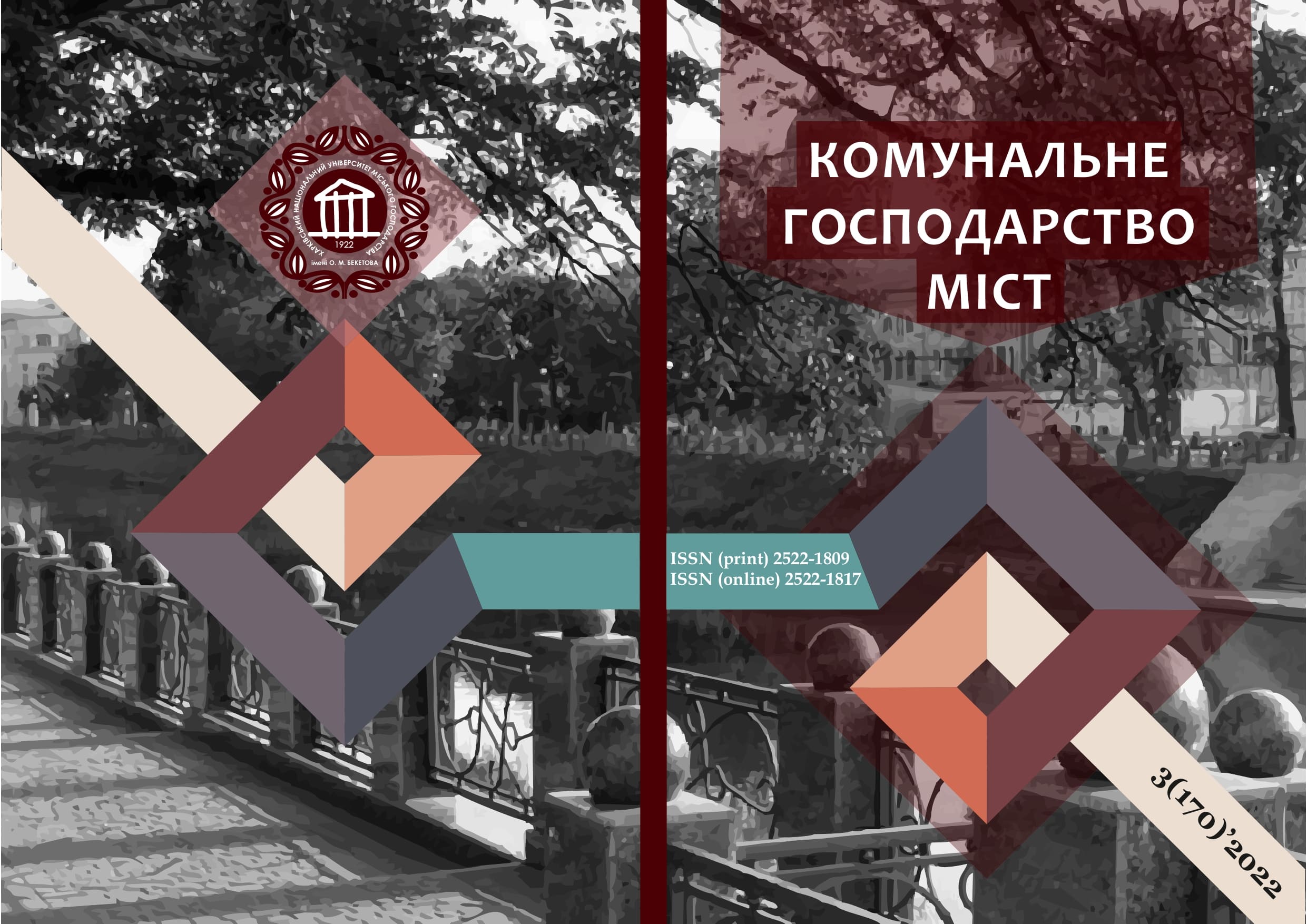COMPARATIVE ANALYSIS OF TEMPLE ARCHITECTURE OF CHINA AND WESTERN EUROPE DURING THE MIDDLE AGES
DOI:
https://doi.org/10.33042/2522-1809-2022-3-170-128-133Keywords:
temple architecture, Europe, China, Gothic, Taoism, Buddhism, synthesis of arts.Abstract
The purpose of the article is to study the temple architecture of China and Western Europe during the Middle Ages in order to build a table of affinities and differences.
Object of research: religious buildings of China and Western Europe of the Middle Ages.
Subject of research: similarities and differences of architectural structures of two religions.
The article describes that one of the factors in the development of China's unique culture was the country's long-term territorial isolation from the world, which provided an opportunity for original development. Today, taking into account globalization in the socio-cultural life of society, there is a problem of self-identification of polar world cultures, in order to preserve the idea of the world structure of individual nations. It is spiritual and philosophical life that fundamentally affects the architectural structure of temple complexes, changing and developing it according to religious canons. For this purpose, an in-depth analysis of the differences in temple architecture was made on the example of a separate time period – the Middle Ages, in order to identify fundamental differences in culture, self-identification, and theoretical and practical approaches to the formation of temple complexes.
All distinctions and affinities were systematized according to criteria and formed into a table.
The conclusions state that the main differences between the medieval temple architecture of China and Western Europe lie in the opposite worldview through the prism of culture and attitude to the surrounding environment. It is thanks to these moments that the structural diversity of the architecture of the temples is reflected. Based on this, the conclusion table 1 was built, in which the evaluation according to various criteria is demonstrated.
Due to China's isolation from world architectural trends and adherence to its own philosophical ideas, its architecture has become original and unique. And the system of tectonic structures is a unique and authentic manifestation of the spirit of Chinese natural philosophy. The conclusions of this study can be used in the study of the degree of stylistic globalization in modern Chinese architecture.
References
Іkonnіkov, A.V. (1998). Moskva – stolicya ta znaki stolichnostі. Arhіtektura v іstorіi rosіjs'koi kul'turu, 2. Moscow, Stolychne mіsto. [in Russian]
Fromm, E. (2004). Anatomіya lyuds'koї destruktivnostі. Moscow, AST. [in Russian]
Luchkova, V.І. (2017). Іstorіya kitajs'kogo mіsta. Mіstobuduvannya, arhіtektura, sadovo-parkove mistectvo. Monografіya. Habarovsk, Vyd-vo Tihookean. derzh. un-tu. [in Russian]
Quan, Fengmei, Hou, Qiqiang. (2018). Idyllic Habilitation: Traditional Houses of Southeast Asia. Nanjing, Southeast Univ. Press.
Visualising China, 1445–1565: Moving and Still Images v Historical Narratives. (2013). Leiden; Boston, Brill Publishers.
Qilou Buildings in Guangzhou. URL: http://www.chinaculture.org/library/2004-11/02/content_62830.htm
Wang, Qijun. (2016). China – Traditionelle Wohnhäuser. Beijing, Verlag für fremdsprachige Literatur. [in German]
Tan Jinhua, Selia. (2017). Kaiping Diaolou і Its Associated Villages. Thesis Master of Science in Conservation. Hong Kong.
Batt o P.R.S. The Diaolou of Kaiping (1842–1937). (2016). China Perspectives: academic journal, 66. URL: http://chinaperspectives.revues.org/1033
Kaiping Diaolou and Villages. URL: http://whc.unesco.org/en/list/1112
Famous buildings. URL: http://www.mzta.gov.cn/English/buildings/
Mao, Zhiyuan. (2014). Value of Shikumen Buildings as the original from the commercial Residential Buildings в China: a Case Study of Meihetang Shikumeng Buildings in Hangzhou. In Proc. VI Seminario Internacional de Investigación en Urbanismo. URL: http://upcommons.upc.edu/revistes/bitstream/2099/16053/1/135_BCN_Mao%20Zhiyuan.pdf
Downloads
Published
How to Cite
Issue
Section
License
The authors who publish in this collection agree with the following terms:
• The authors reserve the right to authorship of their work and give the magazine the right to first publish this work under the terms of license CC BY-NC-ND 4.0 (with the Designation of Authorship - Non-Commercial - Without Derivatives 4.0 International), which allows others to freely distribute the published work with a mandatory reference to the authors of the original work and the first publication of the work in this magazine.
• Authors have the right to make independent extra-exclusive work agreements in the form in which they were published by this magazine (for example, posting work in an electronic repository of an institution or publishing as part of a monograph), provided that the link to the first publication of the work in this journal is maintained. .
• Journal policy allows and encourages the publication of manuscripts on the Internet (for example, in institutions' repositories or on personal websites), both before the publication of this manuscript and during its editorial work, as it contributes to the emergence of productive scientific discussion and positively affects the efficiency and dynamics of the citation of the published work (see The Effect of Open Access).

